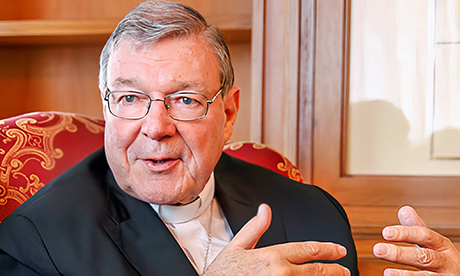The Catholic Church in Australia has known few more extraordinary figures than George Pell.
A product and priest of the rural diocese of Ballarat, he rose to be not only Archbishop of Melbourne but, extraordinarily, Archbishop of Sydney as well.
It was unthinkable then that the Archbishop of Melbourne would be moved to Sydney.
As was said at the time, “It was an insult to both”.
It took George Pell to break the mould.
With the move to Sydney he was named Cardinal, which brought with it a further enhancement of his Vatican profile.
This eventually led to his appointment as Prefect of the Secretariat of the Economy of the Holy See, charged with leading the financial reforms begun by Pope Benedict and pursued by Pope Francis.
Then his legal troubles erupted in Australia in circumstances that remain unclear.
Pell became the victim of an outrageous injustice as he was convicted and jailed for 13 months before a final vindication.
The spiritual poise and strength he showed through all of this was extraordinary. It revealed a depth to George Pell that often went unrecognised.
Through his legal troubles, he was identified wholly with the Catholic Church and vice versa.
Pell was the Church, and the Church was Pell – big, powerful and heartless in the eyes of many. Partly this was because, in his public persona in Australia, Pell had presented himself self-consciously as the voice of the Catholic Church.
Those who didn’t know him thought Pell heartless and humourless, and his media persona could suggest this.
Yet if George Pell had anything, they were a good heart and a sense of humour. It was a pity that more of this didn’t show in his media appearances.
He didn’t claim to be a saint; he knew he was flawed. But he did claim – and rightly – to be a man of faith and a man of the Church. He once told me how struck he was by the words on the Roman tomb of Cardinal Alfredo Ottaviani, Vehementer amavit Ecclesiam (Vehemently he loved the Church).
George said however that he’d prefer on his own tomb, Vehementer amavit Dominum et Ecclesiam (Vehemently he loved the Lord and the Church).
There was nothing bland or half-hearted about George Pell: he was strong, even vehement in his faith, his convictions, his likes and dislikes.
He could be a fierce opponent, unafraid to enter the battle.
At times this could make him seem an ideological warrior, which did not serve him well. It certainly wasn’t George Pell at his best.
He was always a polarising figure, stirring strongly contrasting reactions. He had both passionate friends and passionate foes.
In part, this was because his deepest instincts were those of a politician who thrived on opposition and conflict. It was also tied to an apocalyptic view of the world seen as an arena where good and evil, life and death, light and darkness contended.
There wasn’t much middle ground for George Pell, not too many shades of grey.
But that he had unusual gifts of leadership is certain – intelligence, courage, conviction, self-confidence, political nous and tenacity among them.
Though he chose a life in the Church, George Pell would have been a leader in any field he had chosen.
It will take time to assess his legacy in the Church in Australia, which will prove as complex, even as contradictory as the man himself.
For now we give thanks for the gifts George Pell brought to us and the challenges he posed.
And we pray that, beyond all the struggles and sorrows he knew, this extraordinary man of faith and of the Church, our brother George, will come now before the Lord of mercy who will say to him simply (as Julian of Norwich predicts for each of us), “Thanks for all you’ve done”.
Eternal rest give to George, O Lord, and let perpetual light shine upon him. May he rest in peace. Amen.
- Mark Coleridge is the Archbishop of Brisbane.
